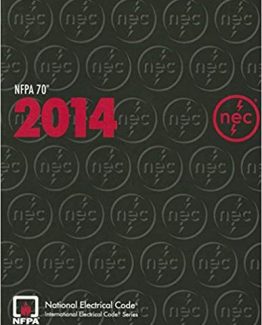5G Radio Access Network Architecture: The Dark Side of 5G by Sasha Sirotkin, ISBN-13: 978-1119550884
[PDF eBook eTextbook]
- Publisher: Wiley-IEEE Press; 1st edition (December 7, 2020)
- Language: English
- 448 pages
- ISBN-10: 1119550882
- ISBN-13: 978-1119550884
Discover how the NG-RAN architecture is, and isn’t, ready for the challenges introduced by 5G.
5G Radio Access Network Architecture: The Dark Side of 5G explores foundational and advanced topics in Radio Access Network (RAN) architecture and why a re-thinking of that architecture is necessary to support new 5G requirements. The distinguished engineer and editor Sasha Sirotkin has included numerous works written by industry insiders with state of the art research at their disposal. The book explains the relevant standards and technologies from an academic perspective, but also explains why particular standards decisions were made and how a variety of NG-RAN architecture options could be deployed in real-life networks.
All major standards and technologies associated with the NG-RAN architecture are discussed in this book, including 3GPP, O-RAN, Small Cell Forum, IEEE, and IETF. Readers will learn about how a re-design of the RAN architecture would ensure that 5G networks can deliver their promised throughput and low latency KPIs consistently and sustainably.
The book is structured as follows:
- An overview of the market drivers of the NG-RAN architecture, like spectrum models, 5G-relevant regulatory considerations, and 5G radio interface technical requirements
- An overview of the 5G System, from the core network, to the RAN, to the radio interface protocols and physical layer, with emphasis on how these are different compared to 4G
- Release-15 RAN architectures defined in 3GPP, O-RAN, and Small Cell Forum
- RAN architecture evolution in Release-16 and Release-17
- Enabling technologies, like virtualization, open source technologies, multi-access edge (MEC) computing, and operations, administration, and management (OAM)
- NG-RAN deployment considerations, objectives, and challenges, like costs, spectrum and radio propagation considerations, and coverage
Perfect for network designers and operators who require a solid understanding of the NG-RAN architecture, 5G Radio Access Network Architecture also belongs on the bookshelves of network engineers who aim to increase their understanding of the standards and technologies relevant to the NG-RAN architecture.
Table of Contents:
1 Introduction 7
2 Market drivers 10
2.1 Introduction 10
2.2 Key Ideas 11
2.3 Spectrum 13
2.3.1 Spectrum Needs 13
2.3.2 Target Spectrum 14
2.3.3 Spectrum Implications 15
2.4 New spectrum models 16
2.4.1 New Ways of Sharing Spectrum 17
2.4.2 Localized Licensing 18
2.5 Regulations Facilitating 5G Applications 19
2.6 Network deployment models 19
2.7 Technical Requirements of 5G Radio Interfaces 20
2.8 Business drivers 22
2.9 Role of standards 24
2.10 Role of open source 26
2.11 Competition 28
2.12 Challenges 29
2.13 Summary 30
2.13 References 31
3 5G System Overview 33
3.1 Introduction 33
3.2 5G Core Network 35
3.2.1 Introduction 35
3.2.2 Service-based architecture 36
3.2.3 Control- and user-plane separation 40
3.2.4 Common access-agnostic core network 41
3.2.5 Enablers for concurrent and efficient access to local and centralized services 41
3.2.6 Network slicing 44
3.2.7 Private networks 46
3.2.8 References 48
3.3 NG Radio Access Network 50
3.3.1 Introduction 50
3.3.2 Network Protocol Stacks 52
3.3.3 NG Interface 54
3.3.4 Xn interface 59
3.3.5 Additional NG-RAN features 64
3.3.6 References 66
3.4 NR Protocol Stack 68
3.4.1 Introduction 68
3.4.2 NG RAN architecture 69
3.4.3 NR User Plane 69
3.4.4 Supporting QoS with 5GC 72
3.4.5. NR Control Plane 73
3.4.6 Summary 79
3.4.7 References 79
3.5 NR Physical Layer 81
3.5.1 Introduction 81
3.5.2 Waveform and numerology 82
3.5.3 Frame structure 83
3.5.4 Synchronization and Initial access 84
3.5.5 Downlink control channel 86
3.5.6 Uplink control channel 88
3.5.7 Reference signals 89
3.5.8 Beam management 93
3.5.9 Channel coding and modulation 94
3.5.10 Co-existence with LTE, forward compatibility and UL coverage enhancement 96
3.5.11 References 97
4 NG-RAN Architecture 99
4.1 Introduction 99
4.1.1 Monolithic gNB architecture 100
4.1.2 Common Public Radio Interface (CPRI) 101
4.1.3 Antenna interface 102
4.1.4 gNB functional split(s) 106
4.1.5 Conclusions 110
4.1.6 Further reading 111
4.1.7 References 111
4.2 High level gNB CU/DU split 113
4.2.1 Key ideas 113
4.2.2 Market drivers 114
4.2.3 Functional description 116
4.2.3.1 F1 Control Plane protocol 117
4.2.3.2 User Plane protocol 124
4.2.3.3 OAM aspects 124
4.2.4 Further reading 125
4.2.5 References 125
4.3 Multi-Radio Dual Connectivity 127
4.3.1 Key ideas 127
4.3.2 MR-DC options 128
4.3.3 Market drivers 129
4.3.4 Functional description 130
4.3.4.1 Control plane 130
4.3.4.2 User plane 133
4.3.4.3 Procedures 136
4.3.5 Further reading 140
4.3.6 References 140
4.4 Control-user plane separation 142
4.4.1 Key ideas 142
4.4.2 Market drivers 143
4.4.3 Functional description 144
4.4.3.1 Control plane 145
4.4.3.2 OAM aspects 151
4.4.3.3 Relation to SDN 151
4.4.3.4 Relation to 5GC 152
4.4.4 Further reading 153
4.4.5 References 153
4.5 Lower layer split 155
4.5.1 Key ideas 155
4.5.2 Market drivers 156
4.5.3 Functional split 157
4.5.3.1 Fronthaul bandwidth requirements 158
4.5.3.2 Low level functional split details 159
4.5.3.3 Latency management 160
4.5.4 Fronthaul interface 162
4.5.4.1 Messages 162
4.5.4.2 Scheduling procedure 165
4.5.4.3 Beamforming methods 166
4.5.5 Fronthaul timing synchronization 166
4.5.6 Operation, administration and maintenance (OAM) 167
4.5.8 Further reading 168
4.5.9 References 168
4.6 Small Cells 169
4.6.1 Key ideas 169
4.6.2 Market drivers 170
4.6.3 Barriers and Solutions 170
4.6.3.1 Site Locations 171
4.6.3.2 Scaling up deployment 171
4.6.3.3 Backhaul 171
4.6.3.4 Edge Compute 172
4.6.4 Small Cell Variants 172
4.6.4.1 Disaggregation Architectures 172
4.6.4.2 Platform Architectures 174
4.6.4.3 Operating Frequency Impacts on Architecture 175
4.6.4.4 Operational Models 176
4.6.5 Key Interfaces for Small Cells 176
4.6.5.1 FAPI 176
4.6.5.2 nFAPI 178
4.6.5.3 Management Plane 180
4.6.6 Worked Examples 180
4.6.6.1 Indoor Enterprise Example 180
4.6.6.2 Outdoor Urban Example 181
4.6.6.3 Private Network example 182
4.6.8 Further reading 182
4.6.9 References 183
4.7 Summary 185
5 NG-RAN Evolution 187
5.1 Introduction 187
5.2 Wireless Relaying in 5G 188
5.2.1 Key Ideas 189
5.2.2 Market drivers 190
5.2.3 Functional Description 191
5.2.4 Outlook 199
5.2.5 References 200
5.3 Non-terrestrial networks 203
5.3.1 Key ideas 205
5.3.2 Market drivers 206
5.3.3 NTN based NG-RAN architecture 206
5.3.4 NR physical layer adaptations for NTN 210
5.3.5 NTN channel model 214
5.3.6 Outlook 215
5.3.7 References 216
6 Enabling Technologies 218
6.1 Introduction 218
6.2 Virtualization 220
6.2.1 Key ideas 220
6.2.2 Market drivers 221
6.2.3 Architecture evolution towards virtualization 222
6.2.4 Containers and microservices 222
6.2.5 NFV evolution 224
6.2.6 RAN virtualization platform 225
6.2.7 Virtualization Challenges 228
6.2.8 Further reading 231
6.2.9 References 231
6.3 Open source 233
6.3.1 Key ideas 234
6.3.2 Market drivers 235
6.3.3 Open Source License 235
6.3.4 Software Defined Radio (SDR) 237
6.3.5 Open Source RAN projects 238
6.3.6 Summary 240
6.3.7 References 240
6.4 Multi-Access Edge Computing (MEC) 241
6.4.1 Key ideas 242
6.4.2 Market drivers 243
6.4.3 MEC standard 244
6.4.4 ETSI MEC deployment in 3GPP 5G systems 247
6.4.5 Inter-MEC system communication 249
6.4.6 Flexible MEC service consumption 251
6.4.7 High mobility automotive scenarios 253
6.4.8 Further reading 255
6.4.9 References 255
6.5 Operations, Administration and Management (OAM) 258
6.5.1 Introduction 258
6.5.2 Key Ideas 258
6.5.3 Service-based management architecture 259
6.5.4 NG-RAN and 5GC Information models 260
6.5.5 Performance Management 261
6.5.6 Management of split NG-RAN 263
6.5.7 O-RAN Alliance management architecture 264
6.5.8 Management of network slicing 264
6.5.9 SON in 5G 267
6.5.10 Further reading 271
6.5.11 References 272
6.6 Transport Network 274
6.6.1 Key ideas 274
6.6.2 Market Drivers 275
6.6.3 Defining the problem 276
6.6.4 The Physical Layer 277
6.6.5 Higher layers 285
6.6.6 Conclusions 297
6.6.7 Refrences 297
7 NG-RAN Deployment Considerations 303
7.1 Introduction 303
7.2 Key ideas 305
7.3 Deployment objectives and challenges 305
7.3.1 Where to provide coverage 306
7.3.2 Network Capacity and Compute Resource planning 307
7.3.3 Service fulfillment criteria 310
7.4 Deployment considerations 311
7.4.1 Deployment Cost 311
7.4.2 Spectrum and radio propagation considerations 312
7.4.3 5G frequency ranges 314
7.4.4 Transport Considerations 314
7.4.5 Baseband Pooling 316
7.4.6 Choice of a NG-RAN split architecture 316
7.5 Conclusions 317
7.6 References 318
This book is the result of the joint work of many contributors who used the vast domain expertise in their respective areas to make it possible.
It has been edited by Alexander (Sasha) Sirotkin, who is a senior engineer with 20 years of experience in telecommunications, international standardisation, intellectual property, machine learning, real-time systems, and open source.
His primary focus areas are 4G/LTE and 5G/NR Radio Access Network (RAN) Architecture, and licensed and unlicensed spectrum integration and co-existence. In standards, Sasha contributed to 3GPP RAN2, RAN3, and RAN plenary, where he served as rapporteur for multiple specifications, as well as work and study items. Currently Sasha serves as the 3GPP RAN3 vice chairman and leads the Intel’s RAN3 delegation. In addition to 3GPP, Sasha has contributed to various other standards development organisations and industry fora, such as IEEE, O-RAN, WFA, WBA, ETSI, and 5G Americas.
Sasha received an MSc in machine learning and BSc degrees in computer science and physics from Tel-Aviv University.
What makes us different?
• Instant Download
• Always Competitive Pricing
• 100% Privacy
• FREE Sample Available
• 24-7 LIVE Customer Support






Reviews
There are no reviews yet.